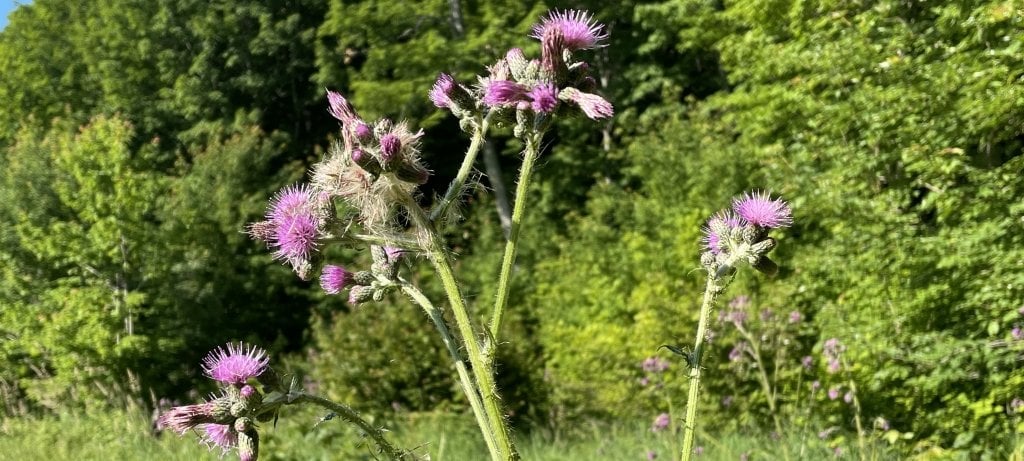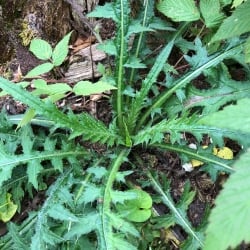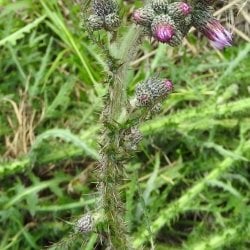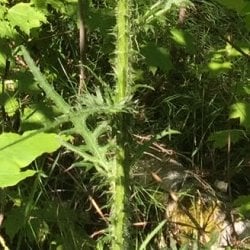European marsh thistle flower and stem
Image credit: Tessa Tormoen

European marsh thistle flower and stem
Image credit: Tessa Tormoen
European marsh thistle, a terrestrial and wetland herbaceous biennial in the Asteraceae family, is an invasive plant that prefers moist soils. European marsh thistle frequently invades fens, wetlands, and disturbed sites such as roadside ditches. Identifying features include:
Note: European marsh thistle is distinguished from Canada thistle by having spines that cover the stem, leaves, and flowers.
For more information visit Midwest Invasive Species Information Network (MISIN).

Leaf foliage of European marsh thistle
Image credit: Sigrid Resh

The spiny stem of a European marsh thistle
Image credit: Sigrid Resh

Close up of the leaves and stem of a European marsh thistle
Image credit: Sigrid Resh
European marsh thistle can colonize areas quite aggressively and can be difficult to remove from areas due to the wet soils they prefer. Current management practices:
Note: It is important to pull second growth plants to eventually exhaust the seed source and deplete populations. It is also important to bag flower clippings to prevent further seed production and spread.
Species such as native swamp thistle (Cirsium muticum), swamp milkweed (Asclepias incarnata), and joe-pye weed (Eutrochium maculatum), are all great alternatives to European marsh thistle. These species are tall herbaceous perennial flowers that are extremely similar to European marsh thistle. All of these would be great choices for replanting in areas where European marsh thistle has been removed.